Shore tethering of Vemco receivers: lessons learned
During our study of adult salmon movements in the San Juan Islands, we tested a novel method of deploying Vemco (VR2W) receivers. With permission from local land-owners, we used free climbing equipment or pitons to anchor a crab pot line to the rocky shoreline, marked it as fish research to discourage vandalism or theft, and then used it to tether the Vemco receiver mooring to shore. This allowed us to deploy and recover the mooring from a small boat, saving the cost of divers and simplifying the re-location of a mooring.
Tethered mooring materials, methods, and locations
Salmon school passes around the fish tag receiver mooring at Lime Kiln State Park
Project map (Google map in which green markers denote deployed receivers, magenta are recovered from our UW/NOAA collaboration (2011-2013), yellow were planned sites for 2011-12, red are other potential sites, and blue are landmarks):
View San Juan fish tag receiver deployments in a larger map
Deployment method
A typical deployment involved dropping a researcher off on shore. While the boat driver stood off and prepared the mooring, on shore the researcher created a climbing anchor using cracks of convenience in the rocks and/or trees. Aluminum alloy wired nuts, chocks, and hexes were the most common anchoring devices. Both seemed to weather the salt-water environment very well, though the stainless wire rope in the nuts and chocks showed some signs of corrosion after about a year in the field. Once set, the anchor was attached to a length of leaded crab pot line, a float was tied to the end, and the float was cast well offshore. The driver then returned to pick up the researcher and together they retrieved the float. The shore tether was then tied to the mooring and as the boat backed away from shore towards the deployment point, line and anchors were deployed until adequate water depth was attained. Finally, the mooring assembly was lowered into the water and released. (Early on we used a slip line, but eventually just dropped the moorings as they seemed to sink vertically and not too fast.)
Recovery method
A typical recovery also began by dropping a researcher on shore. First the anchor was removed or checked and maintained. Then the tether was disconnected from the anchor and attached to a float. The float was cast offshore, the researcher picked up, and the float brought onboard. Then the dirty work of hauling up the mooring began. A bow roller helped, as did having two people work together. An important innovation was a short piece of PVC slit so that it could be passed around the line and used to strip fouling off as the line was brought aboard. Once the mooring was raised, the receiver could be removed or swapped. Then the mooring assembly could be stored or immediately reused in a new deployment.
With a small boat capable of doing 25 knots on flat water, this method allowed us to service 4-6 receivers per day. At the end of the study, we were able to retrieve 8 receivers in a single day trip beginning and ending in Seattle.
Lessons learned
- Galvanic corrosion (between a stainless steel shackle and a length of galvanized chain) caused the loss of Lime Kiln receiver (luckily it was found on a beach near Victoria). Connect the Vemco to the mooring anchor using a single type of metal (e.g. a galvanized shackle).
- Mooring depths should be at least 5-8 meters deep especially in high surge environments. Shallow deployments resulted in the loss of 2 False Bay receivers (one was found on a nearby beach).
- Dive recoveries were required 4 times, primarily because of chafe (Iceberg, Sucia, Sentinel, Patos). Minimize tension and contact with rock edges?
- Human disturbance rare (despite faded labels, only Turn Point and Obstruction were disturbed; neither was removed).
Examples of different amounts of fouling
The amount of marine organisms that colonize the mooring float, receiver, and/or anchor — as well as the line — varied tremendously between sites. Geography and oceanography are likely the controlling factors, but there was some suggestion that deeper deployments had less growth overall, and especially reduced amounts of brown algae colonization.
- Sentinel 15 months @17m
- Pt. George 17.5 months @13m
Undergraduate involvement
Unlike diving, this method allows students to assist in deployments and recoveries without specialized training. The method helps motivate new knot tying skills as well as small boat operations.
While Beam Reach students have not yet utilized data from the San Juan salmon tracking study, we hope that the Hydra database will facilitate that. To date, our only student projects using Vemco data came from our own tagging of ling cod at Lime Kiln State Park with pressure-sensing tags and monitoring achieved with a VR100 system.

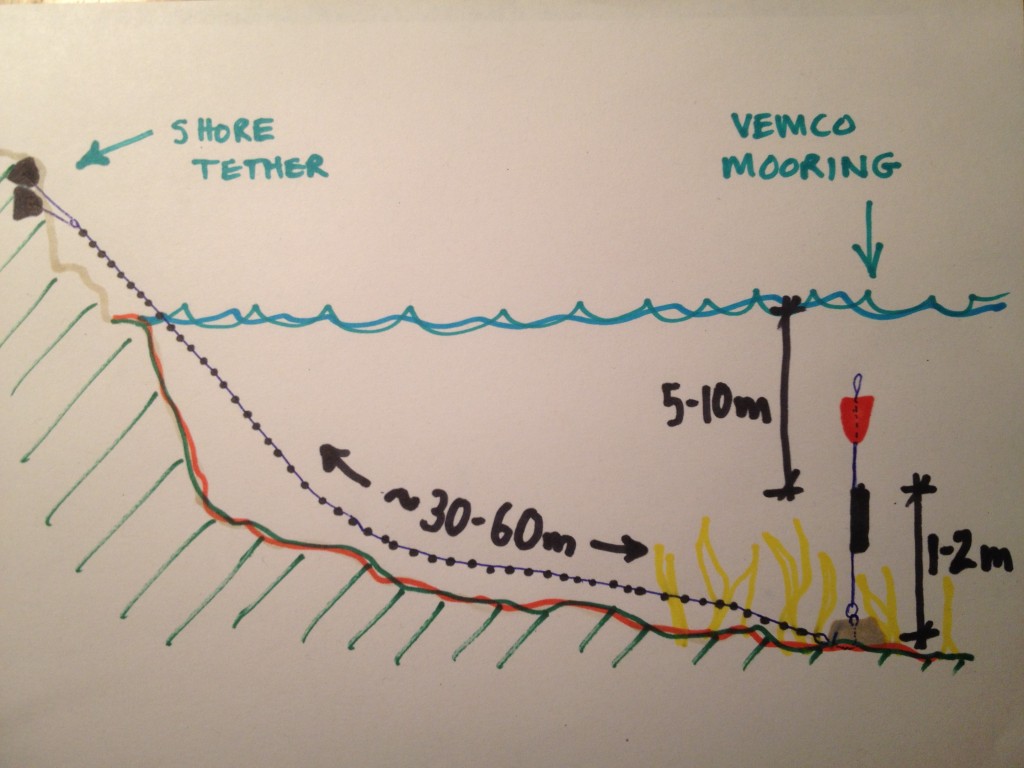
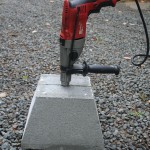
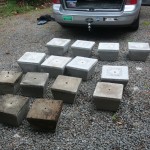
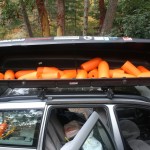
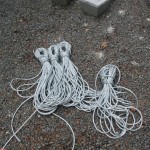
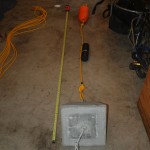
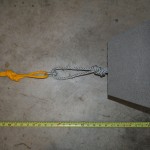
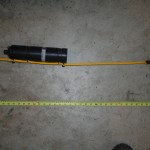
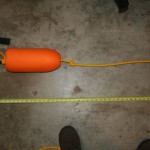
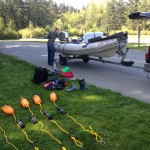
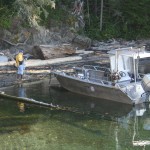
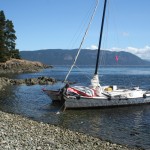
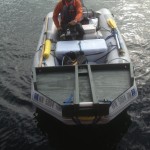
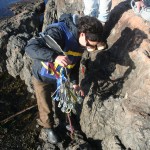
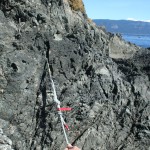
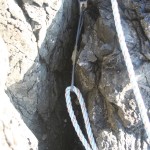
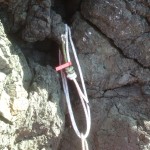
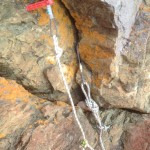

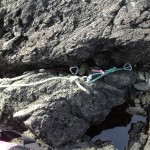
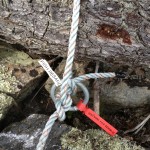
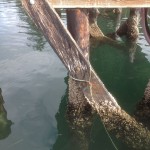
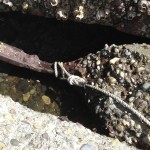
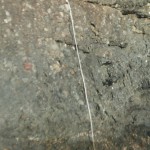
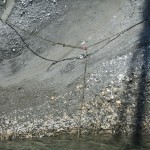
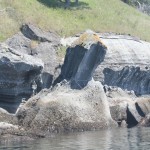
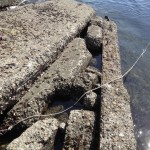
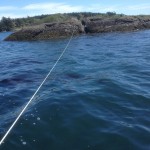
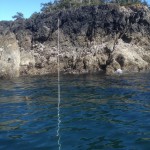
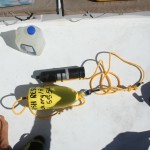
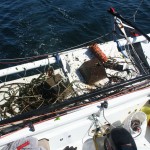
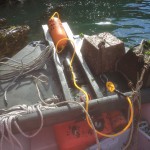
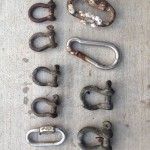
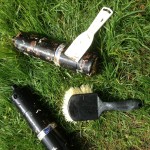
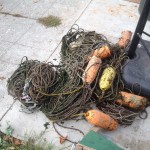
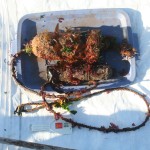
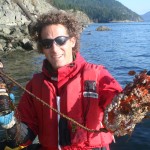
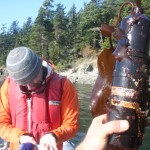
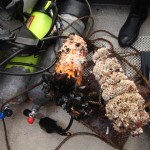
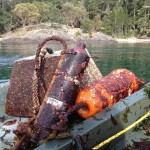


 Twitter
Twitter LinkedIn
LinkedIn Facebook
Facebook